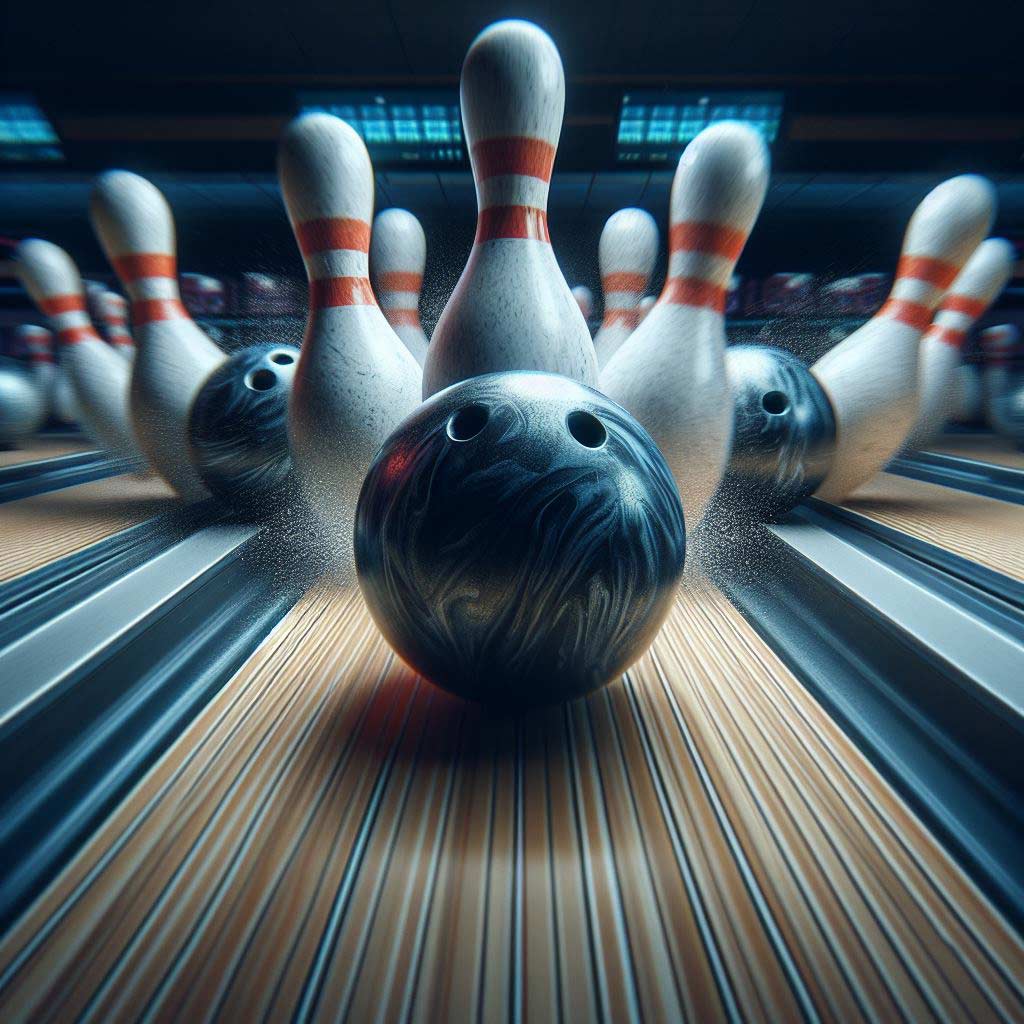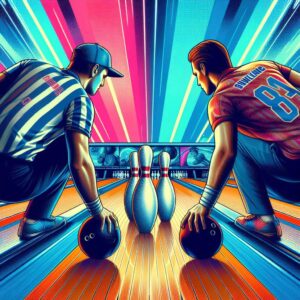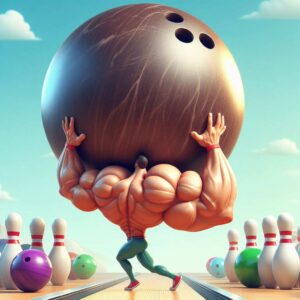The smooth, polished wooden boards that make up a bowling lane surface play a critical role in ball control, scoring, and the overall bowling experience.
Keeping these bowling lane boards in excellent condition through proper maintenance and resurfacing techniques is an essential duty of any bowling center.
In this comprehensive guide, we’ll discuss the intricacies of bowling lane boards. You’ll learn about:
- The common materials used for constructing lane boards
- Vital maintenance practices and resurfacing methods
- Signs that your current boards need resurfacing
- Installing new replacement boards
- Estimated costs of lane board upkeep and repair
Gaining a thorough understanding of lane boards helps you make smart management decisions that save thousands in potential replacement costs down the road. Let’s dive into the world of bowling lane boards!
Common Materials for Bowling Lane Boards
The regulation bowling lane consists of over 40 individual boards, each around 1 inch thick. While various materials can be used, hardwood maple has been the standard choice for bowling lane boards for decades.
Maple possesses many favorable properties that make it ideally suited for lane boards, including:
- Hardness – Maple is a dense hardwood that withstands repeated ball impacts. Its Janka hardness rating of 1,450 lbs makes it more durable than softer woods.
- Smoothness – The fine, even texture of maple allows freshly resurfaced boards to have minimal friction. This facilitates straight, speedy ball rolls.
- Moisture resistance – Maple contains natural compounds that make it more moisture and oil-resistant. This reduces swelling and distortion.
- Stability – The grain structure of maple minimizes expansion and contraction. This maintains proper board spacing year-round.
- Affordability – Maple is relatively affordable compared to exotic specialty woods, keeping construction and maintenance costs down.
Synthetic materials have also been introduced as alternatives for constructing bowling lane boards. Some examples include:
- Plastic laminates – These are layered sheets fused to a plywood core, providing a durable and consistent synthetic lane surface.
- Resin composites – Powdered wood and plastic/resin are compressed to form dense, synthetic boards. Brands like Neolane and Vector Plus mimic wood properties.
- Fiberglass – Provides a highly durable synthetic surface, though some bowlers dislike the feel.
While synthetics offer benefits like economy and consistency, many bowling centers still prefer traditional hardwood maple for authenticity and superior performance.
Lane Board Maintenance and Resurfacing
To maintain proper functioning, regular cleaning and resurfacing of bowling lane boards is a must. The bowling balls rolling down the lane create friction and lateral board stresses. Oil, dirt, and bowling residue build up in the microscopic wood pores and grooves over repeated games.
Failure to adequately maintain the lanes leads to unevenness, slippery or sticky spots, and other inconsistencies affecting play.
Here are some standard techniques bowling centers use to keep their lane boards in top shape:
- Daily cleaning – Lane surfaces are wiped down daily to remove surface oil and bowling debris. Detergents and cleaning solutions remove sticky buildup.
- Conditioning oil – New coats of lane oil are applied every 1-3 days. This protects boards and provides an ideal oil pattern.
- Resanding – Using specialized abrasive machines, worn top layers of the lane are sanded down to reveal fresh wood.
- Refinishing – New polyurethane finishes are applied after sanding to seal and protect the raw wood surface.
- Full resurfacing – Involves removing several top layers of wood through drum sanding and re-laying poly coatings. Done roughly 1-2 times per year.
- Board repair/replacement – Damaged or excessively worn boards are removed and replaced with new maple boards as needed.
Well-maintained lane boards typically receive deep resurfacing treatments at least once annually. Some very high-traffic centers may need full resurfacing 2-4 times a year. Working with qualified technicians is advised.
Signs Your Lane Boards Need Resurfacing
How can you determine when your bowling lane boards are due for resurfacing? Look for these telltale signs during bowling games and inspection:
- Unevenness – Boards may dip or rise compared to others, affecting rolls. Use a straightedge to check for gaps larger than 1/32 inch between adjoining boards.
- Splintering – Repeated impacts can cause wood fibers to fray and splinter at the edges and between board joints.
- Slickness – Excess oil absorption causes slides and loss of traction. Balls may stick briefly in oily areas.
- Excess friction – When oil patterns get disrupted, friction increases leading to sticking and unpredictable hook.
- Reduced pin action – Pins fall weakly and not as consistently when balls lose energy from friction.
- Lower ball speeds – Excess friction saps ball momentum, reducing pin velocity and excitement.
- Limited hook potential – Inconsistent oiling and worn boards decrease potential ball curve and pin action dramatically.
- Visual cues – Look for cracking, swollen/raised sections, and grayish haze indicating a worn finish. The underlying wood grain and texture should not be overly visible.
Don’t wait until the boards are excessively worn. Address issues promptly when these problems arise. Performing maintenance at the first signs of trouble reduces costs.
Installing New Bowling Lane Boards
Over years of use, certain bowling lane boards may become damaged beyond repair or exceed their service lifespan. Replacing worn-out boards helps restore lane consistency and ball performance.
When installing new lane boards, adherence to regulation standards is crucial:
- Board width – Standard boards are 1 inch wide, with a length spanning the entire lane. Use this width for seamless consistency.
- Board composition – Maple wood boards offer ideal longevity, however synthetic materials can also be used.
- Board spacing – A slight 1/32-inch gap must separate each board to allow for wood expansion.
- Board alignment – Boards must run perfectly parallel down the lane’s edge and pin deck to avoid tracking issues.
- Level installation – Floor leveling techniques ensure flush board installation free of dips or bumps.
- Fasteners – Concealed anchors like lag bolts secure each new board firmly to the underlying lane foundations.
- Transitions – When replacing specific boards, sand, and finish transition areas to create seamless surfaces between old and new wood.
- Finish – A polyurethane coating properly seals and protects newly installed raw boards after fitting and sanding.
With high-quality maple wood boards installed by trained professionals, newly replaced sections will match and perform like the existing lane area.
Costs of Bowling Lane Board Maintenance
What type of budget is needed for proper bowling lane board maintenance? Here are some ballpark costs:
- Daily cleaning – Using in-house staff this is roughly $200-400 per month for solutions and labor. Contracted services cost $600-800 monthly.
- Oil conditioning – Lane oil expenses range from $150 to 300 per month depending on oil pattern frequency.
- Resanding – Simple resanding can be done for $1000-2000 per lane. Heavier sanding may run $2500-3500.
- Refinishing – A standard polyurethane refinish costs $1000-1500 per lane.
- Full resurfacing – Expect $4000-6000 per lane for deep resurfacing treatments 1-2 times annually.
- Spot board replacement – $200-400 per board, including materials and labor.
- Full wood replacement – A complete new maple lane will cost $20,000-30,000 to install.
While deep resurfacing and board replacement may seem costly, this pales in comparison to a full lane replacement costing over $200,000 for a center! Staying on top of maintenance saves big in the long run.
Conclusion
Smooth, professional-quality bowling lane boards are vital for bowling operations and excellent customer experiences. By caring properly for your boards using proven cleaning, conditioning, and resurfacing methods, bowling lanes can maintain their playability for decades to come.
By selecting durable maple wood or advanced synthetic materials, monitoring board wear, addressing issues promptly, and investing in preventative maintenance, bowling centers can avoid very costly premature replacements.
With the tips from this comprehensive guide, you now have the insights to make smart lane board management decisions that keep bowlers satisfied and costs under control.
Frequently Asked Questions
How many boards across is a bowling lane?
A standard bowling lane is 41-42 boards wide. This includes 39 main boards for ball rolling, plus 1-2 edge boards on each side.
How do you count bowling lane boards?
Lane boards are numbered 1-39 from right to left for a right-handed bowler. The first board on the right gutter is board 1, increasing left until board 39 along the left gutter.
What wood do they use on bowling alleys?
Hard maple wood is the standard material used for constructing bowling lane boards and surfaces. Maple is durable, smooth, and resistant to moisture damage.
How many boards are between the arrows in bowling?
There are 12 boards between the center arrows that aim bowlers toward the pocket. This is a distance of 12 feet from the midpoint between arrows to the foul line.
What is Rule 31 in bowling?
Rule 31 means that alternate lane surfaces must be free of debris and foreign objects. This ensures fair conditions.
How many boards should you move in bowling?
Making moves in increments of 2-4 boards at a time is recommended, observing how ball reaction changes. Moving more than 8 boards takes more adjustment.
Why am I always leaving the 10 pin?
Reasons for consistent 10 pins include not squaring shoulders, improper foot placement, inconsistent release, and failing to adjust angle and speed for the lane transition.
Where do pro bowlers aim?
Professional bowlers aim for the pocket, which is the 1-3 pin or 1-2 pin area. They make adjustments based on reading the oil patterns.
How is a bowling lane set up?
Bowling lanes have gutters, lane surface boards, arrows, pins in a triangle formation, ball returns, foul line, and seating area. Lane oils create slide patterns.





